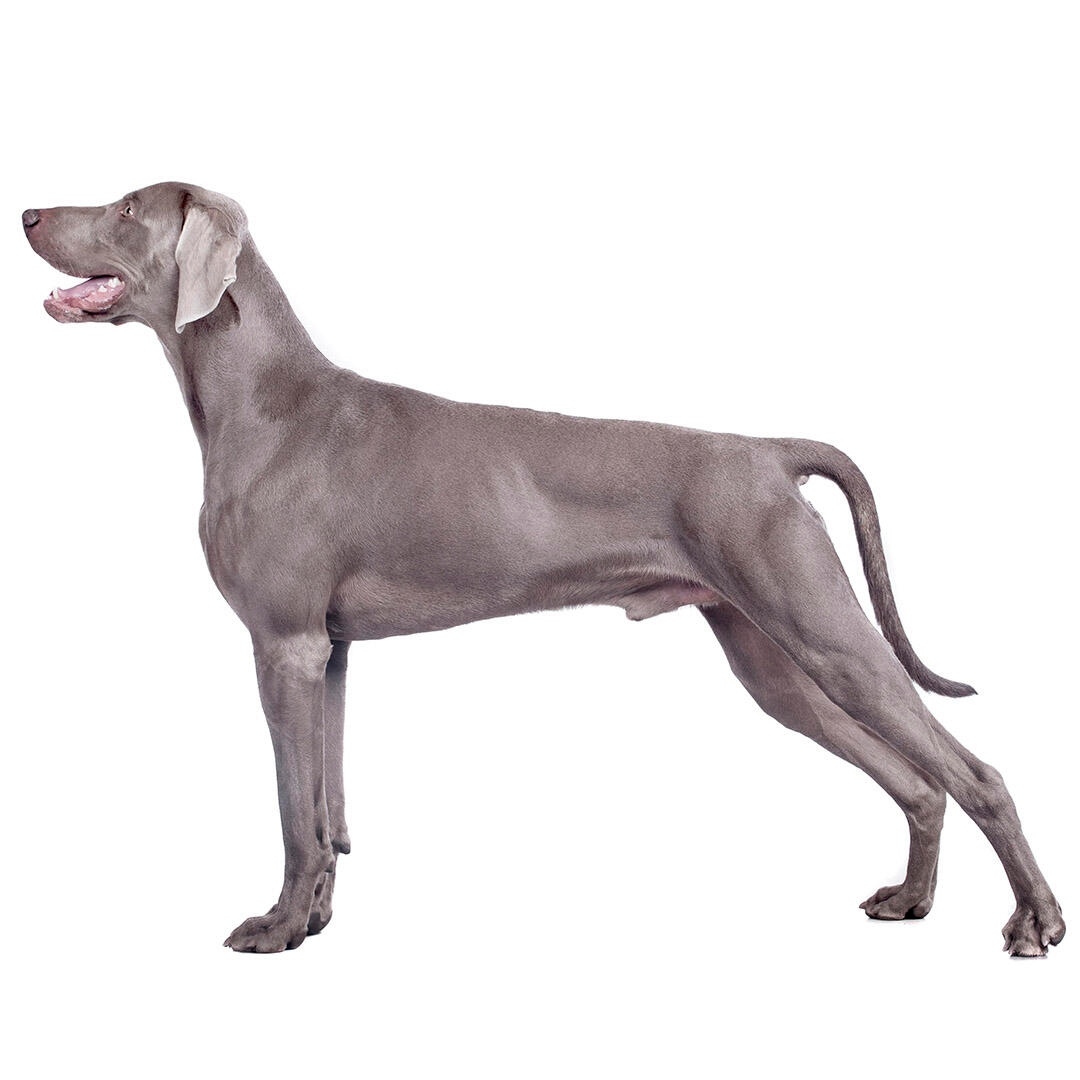
| Family-friendly: | 5/5 |
| Exercise needs: | 5/5 |
| Easy to train: | 4/5 |
| Tolerates being alone: | 1/5 |
| Likes other pets: | 3/5 |
| Energy level: | 5/5 |
| Grooming needs: | 4/5 |
| Shedding: | 4/5 |
The Weimeraner breed can suffer from:
- Hip dysplasia
- Gastric dilatation volvulus
Priority Kennel Club health schemes and testing:
- Hip dysplasia screening scheme
Weimaraners are all-round dogs who love family life. They are friendly and energetic but, with their vigilance, make excellent guard dogs. They are very strong characters so are not the ideal first dog for a novice owner, but if you have experience and can socialise, train and exercise them, they make a very rewarding companion.
| Family-friendly: | 5/5 |
| Exercise needs: | 5/5 |
| Easy to train: | 4/5 |
| Tolerates being alone: | 1/5 |
| Likes other pets: | 3/5 |
| Energy level: | 5/5 |
| Grooming needs: | 4/5 |
| Shedding: | 4/5 |
Known as the Grey Ghost, the Weimaraner’s origins spring form the court of the Grand Duke Karl August of Weimar sometime around 1810. His aim was to breed a perfect hunting dog and so crossed German Pointers, French Hounds and Bloodhounds to produce a dog that would be as happy hunting bears as they would be birds. He also wanted a head-turning dog that would be a status symbol for the nobility.
The breed was closely guarded in Germany, until just before the outbreak of the second world war, when a breeder managed to acquire a male and two females and take them to the US. In 1943, the AKC recognised the breed but it wasn’t until the 1950s that they made their way to the UK.
Ideal Weimaraner owners will have some gundog experience, lots of time for training and walks and a sense of humour for ‘those moments’ when your Weim does something utterly bizarre for no obvious reason. Weimaraners will benefit from some sort of job, whether that’s traditional gundog work or something else doesn’t matter, as long as both owner and dog enjoy the task. Suited to rural or semi-rural owners with older children or the child-free home.
Weimaraner is an energetic, highly active dog that needs plenty of dog exercise to keep him healthy and happy. Without it, he can become destructive, boisterous, or an escape artist!
Many enjoy swimming, and love to retrieve and both these activities keep their active minds occupied. An adult Weimaraner needs two-plus hours of regular daily exercise along with ongoing training.
This is a large dog who needs a good-sized, well-fenced garden and a country location to ensure he gets all the exercise he needs.
Large breed dogs, as well as having large appetites, benefit from a different balance of nutrients including minerals and vitamins compared to smaller-breed dogs. Weimaraners are prone to bloating and stomach problems; smaller, more frequent meals can help minimise this risk.
The short-haired Weimaraner dog is one of the easiest breeds to keep clean with very little grooming required. Even when he has been through the muddiest of fields, the dirt seems to fall off him very easily, leaving you with nothing to do but 'polish' up his coat! The more unusual longer-haired variety, with a coat of 2.5-5cm in length and feathering does, however, require more attention. They should be brushed and combed regularly. A check should be made on their ears routinely to ensure they are free from infections.
The Weimaraner can be a challenge to train as he is often stubborn and strong willed, and he needs an experienced owner to get the best out of him. Once convinced to work, the Weimaraner loves to be challenged by training – and for many, agility is an ideal answer. Early and ongoing socialisation is important with this breed.
The Weimeraner is a friendly dog but often too bouncy and active to live with young children. In a family with older, quitter children, he can make a great family dog.
While many dogs are traditionally thought of as being good with children, all dogs and children need to be taught to get on with and respect each other, and be safe together. Even so, dogs and young children should never be left alone together and adults should supervise all interactions between them.